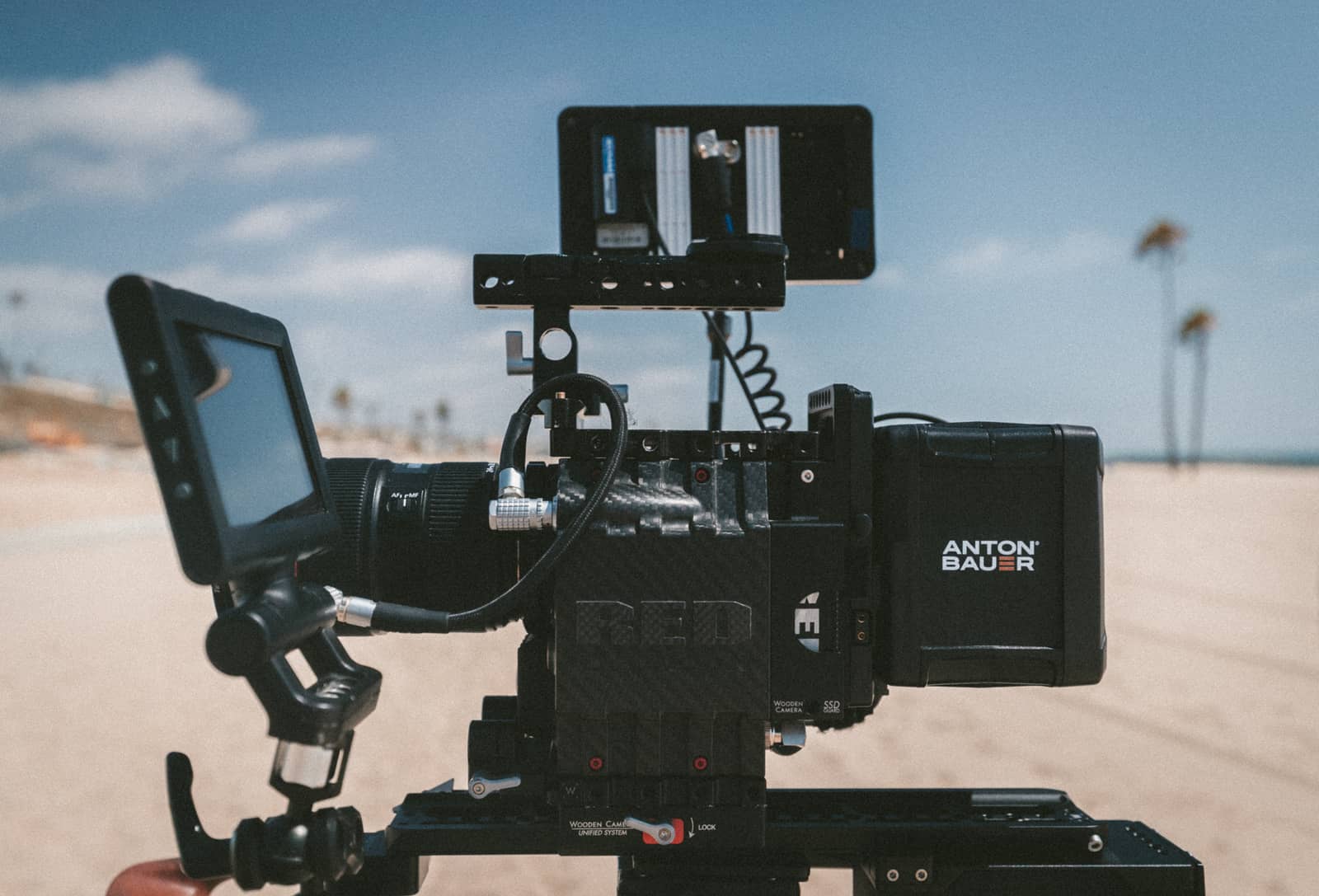As an avid video editor myself, I understand the importance of finding the best laptop for video editing that not only meets your budget but also your specific needs. Performance, reliability, and efficiency are crucial factors when selecting a laptop for editing under $2000. You want a machine that can handle the rigors of high-resolution footage, multiple formats, and a diverse range of software applications. In this guide, I'll share my insights and experience to help you find the perfect laptop that fits the bill.
To compile my recommendations, I've scoured an extensive laptop spreadsheet of recent releases, comparing specs, and analyzing both professional and user-generated reviews. I've then narrowed down the top contenders based on key requirements for video editing, including processor performance, dedicated graphics capabilities, RAM, and storage capacity, all within a reasonable price range. As someone who spends hours editing and refining footage, I know the importance of a fast and efficient workflow, and I've made sure to prioritize laptops that meet these criteria.
While selecting the best laptop for video editing under $2000, I've also considered the specific needs of editors working with various video formats, as well as the demands of popular editing software like Adobe Premiere Pro, Final Cut Pro, and DaVinci Resolve. Moreover, I've taken into account the importance of a high-quality display, color accuracy, and connectivity options for external devices. Armed with this knowledge, you'll be well-equipped to make an informed decision and invest in a laptop that will elevate your video editing experience to new heights.
Unleash the Power: Finding the Best Processor for Video Editing Laptops Under $1200
When it comes to video editing, having the right laptop processor can make all the difference in performance and efficiency. Let's take a look at the latest offerings in the CPU market and how to choose the right processor for your needs.
Apple's ARM-based M1, M2, M2 Pro, and M2 Max system-on-chip modules offer exceptional single-core performance and battery life, making them a popular choice for video editing. However, Windows laptops are also a good option if you don't need the Apple premium.
Video editing is one of the few tasks that can take advantage of multiple cores, so it's essential to consider the number of cores, frequency, and thermals when choosing a processor. While a high-end CPU can offer better performance, it's not always necessary for video editing. It's all about finding the right balance between performance and budget.
To rank processors by performance, I recommend using Cinebench R23, PassMark, or Geekbench benchmarks, as they are excellent tools for testing video editing performance.
Based on our research, we've compiled a table of recommended processors by price bracket:
| Price Bracket | Processor |
|---|---|
| Minimum | Intel Core i5-11320H |
| Recommended | AMD Ryzen 5 5600U |
| High-end | Intel Core i5-11500H |
These processors offer a good balance between performance and budget, making them ideal for video editing. Remember to also look for a laptop with a long-lasting battery if you want a machine that will last you for years.
Overall, when deciding on the right laptop processor for video editing, it's crucial to find the right balance between performance, budget, and battery life. With these considerations in mind, you'll be able to choose the right processor for your needs and get started on your next video editing project.
Cutting-edge graphics without breaking the bank
If you're looking for a laptop that can handle video editing, the graphics card is an essential consideration. While Nvidia dominates the laptop GPU market, the latest generation of graphics cards may not be available in laptops yet, so you'll need to settle for the previous generation or the current one.
When it comes to video editing, the GPU is not as critical as it is for gaming or machine learning. However, it can make a significant difference in certain situations, such as working with high-resolution footage or RAW files. The GPU helps accelerate rendering times, which can save you time and frustration in the editing process.
To determine which GPU is best for video editing, I recommend using industry-standard benchmarking tools like 3DMark. It measures various aspects of graphics performance, including clock speed, memory bandwidth, and OpenCL.
When considering a GPU for video editing, you'll want to look at both its performance and power consumption. Gaming laptops tend to have higher power consumption than regular laptops, so keep that in mind if battery life is a crucial factor for you.
So, which GPUs are best for video editing? Here are my recommendations based on average prices:
| Minimum | Recommended | High-end |
|---|---|---|
| GeForce RTX 3050 | GeForce RTX 3060 | GeForce RTX 2080 SUPER |
| $700 | $1200 | $1800 |
Note that these prices are subject to change depending on your region and the specific laptop model you're looking at.
Lastly, if you're wondering whether it's worth upgrading your laptop's GPU, the answer will depend on your specific use case. If you're only doing occasional video editing, it may not be necessary. However, if you're a professional or someone who does a lot of video editing, upgrading your GPU could be a wise investment.
Memory Matters: How Much RAM Do You Need for Video Editing?
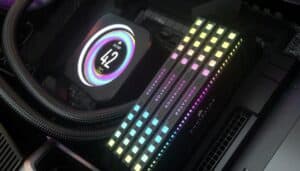
Video editing is one of the most demanding tasks for a laptop. It requires a significant amount of RAM to handle large video files, complex effects, and seamless rendering. When it comes to video editing, the more RAM you have, the better. However, it's essential to understand that having more RAM does not always translate to better performance.
If you're a professional video editor, you should aim for at least 32 GB of RAM. If you have a higher budget, consider going for 64 GB. On the other hand, if you're an amateur or a student, 16 GB should suffice.
When it comes to RAM speed, DDR4 is currently the most commonly used memory type in laptops. While DDR5 is available, it is still relatively new and expensive. However, if you're working with 8K footage in Premiere Pro or After Effects, DDR5 memory can provide a minor performance boost. Keep in mind that this feature is only available on the latest generation of Intel and AMD CPUs.
Latency and frequency are also essential factors to consider when choosing RAM for video editing. Lower latency and higher frequency typically result in better performance. However, in most cases, these differences are minimal and may not justify the price difference.
When looking for laptops for video editing, you should consider those that have at least two SODIMM slots that are accessible from the outside and can be upgraded later on. This way, you can upgrade your laptop's RAM without having to replace the entire device.
Here's what you can expect at different price points:
| Price Range | RAM |
|---|---|
| Under $800 | 8-16 GB DDR4 |
| $800 – $1,500 | 16-32 GB DDR4 |
| $1,500 and above | 32-64 GB DDR4 or DDR5 |
In conclusion, if you're serious about video editing, investing in a laptop with at least 32 GB of RAM is recommended. DDR4 is still the most commonly used memory type, but DDR5 can provide a slight performance boost, especially when working with 8K footage. Other factors like latency and frequency are worth considering, but may not justify the price difference for most users.
Unleashing your video editing potential with a budget-friendly laptop: FAQs answered
Q: Which laptop is best for video editing under $200?
When it comes to video editing, it's essential to have a powerful machine that can handle the demanding tasks involved. Unfortunately, finding a laptop under $200 that can meet those requirements can be quite challenging. At this price point, you'll likely have to make significant compromises in terms of performance and features. We recommend considering other options in a higher price range for a better editing experience.
What are the recommended laptop specs for video editing under $200?
Although it may be difficult to find a laptop under $200 that meets the recommended specs for video editing, here's what we suggest aiming for:
- Processor: Look for a laptop with at least an i5-11320H or an AMD Ryzen 5 5600U. These processors provide decent processing power for video editing tasks.
- Graphics: A dedicated graphics card is crucial for video editing. While it may be challenging to find a laptop under $200 with a dedicated GPU, you can still consider models with an integrated GPU like the GeForce RTX 3050.
- Memory: Video editing requires a significant amount of RAM. Aim for a laptop with at least 16 GB of RAM to ensure smooth editing performance.
Can I find a good laptop for video editing under $200?
Finding a "good" laptop for video editing under $200 is highly unlikely. Video editing requires substantial processing power, ample RAM, and a dedicated graphics card, all of which come at a higher cost. If video editing is a priority for you, we recommend saving up a bit more and considering laptops in a higher price range to ensure a satisfactory editing experience.
What are the minimum requirements for a laptop for video editing under $200?
While it's challenging to find a laptop under $200 that meets the minimum requirements for video editing, here's what you should aim for:
- Processor: Look for a laptop with at least an i5-11320H or a similarly capable processor.
- Graphics: An integrated GPU like the GeForce RTX 3050 may be the best you can find within this price range.
- Memory: Aim for a laptop with at least 16 GB of RAM to ensure smooth video editing performance.
Are there any budget laptops suitable for video editing under $200?
Budget laptops under $200 are unlikely to be suitable for video editing. Video editing tasks demand substantial processing power, ample RAM, and a dedicated graphics card, which are usually not found in laptops within this price range. We recommend considering laptops in a higher price range to ensure a satisfactory editing experience.
How to choose a laptop for video editing under $200?
When choosing a laptop for video editing under $200, it's important to consider the following factors:
- Processor: Look for a laptop with the most powerful processor available within your budget, such as an i5-11320H or an AMD Ryzen 5 5600U.
- Graphics: While it may be difficult to find a laptop under $200 with a dedicated GPU, consider models with an integrated GPU like the GeForce RTX 3050.
- Memory: Aim for a laptop with at least 16 GB of RAM for better editing performance.
- Storage: Choose a laptop with a solid-state drive (SSD) for faster data access and improved editing workflow.
Remember, finding a laptop with all these features within the $200 price range is challenging. Consider saving up for a higher-priced laptop to ensure a more satisfactory video editing experience.
Is it possible to find a laptop with a dedicated GPU for video editing under $200?
It's highly unlikely to find a laptop with a dedicated GPU for video editing under $200. Dedicated GPUs are typically found in higher-priced laptops that are better suited for resource-intensive tasks like video editing. At this price point, you may have to compromise on having a dedicated GPU and rely on integrated graphics like the GeForce RTX 3050.
Can a laptop under $200 handle video editing software like Adobe Premiere Pro?
Laptops under $200 will generally struggle to handle video editing software like Adobe Premiere Pro. These software applications demand significant processing power, ample RAM, and a dedicated graphics card to provide a smooth editing experience. While you may be able to run basic editing tasks on a laptop under $200, complex projects and high-resolution video editing will be challenging. We recommend considering laptops in a higher price range for a more satisfactory experience with Adobe Premiere Pro.
What are some affordable laptop options for video editing under $200?
Finding affordable laptop options for video editing under $200 can be quite challenging. However, if you're on a tight budget, you might consider looking for refurbished or used laptops that offer better specs for the price. Keep in mind that these options may come
5 Best Laptops for Video Editing Under $1200
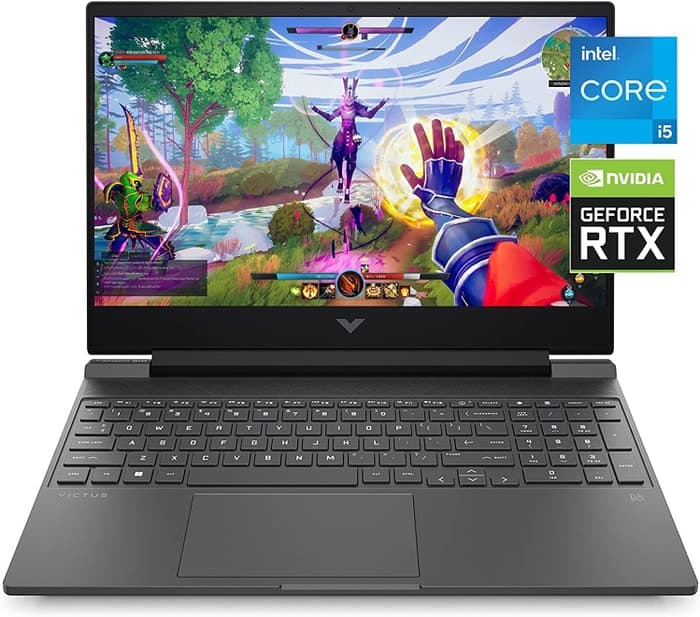
1.HP Victus
The HP Victus is a solid gaming laptop with a few drawbacks.- Delivers smooth gameplay at 1080p.
- Fast SSD.
- User-replaceable memory and storage.
- Good port selection.
- No variable refresh rate to reduce screen tearing.
- Some performance loss on CPU under load.
Summary
The HP Victus is a great gaming laptop with powerful hardware and smooth gameplay at 1080p. It also offers a fast SSD and user-replaceable memory and storage. However, it lacks variable refresh rate and experiences some performance loss on the CPU under load.
Reviews
Alternatives

MSI FHD
- Extremely affordable
- Capable in mid-range games
- Rivals are routinely faster
- Single-channel memory

2.ASUS TUF Dash F15
ASUS TUF Dash F15: A powerful and affordable option for video editing on a budget.- Lightweight and well built
- Good FHD 300Hz and QHD screen options
- Significantly more powerful than the previous generation
- Competitively priced
- Some quirks affecting everyday ergonomics
- Most ports squeezed together on the left edge
- Be cautious of the FHD 144Hz panel option
Summary
The ASUS TUF Dash F15 is a well-built and lightweight laptop that offers good performance for video editing at a competitive price. With its powerful hardware, good screen options, and decent battery life, it is a solid choice for those on a lower budget.
Reviews
Alternatives

Lenovo Legion 5i Pro 16
- Stylish and sleek form factor
- Gorgeous display
- Webcam quality is poor
- No biometrics for added security
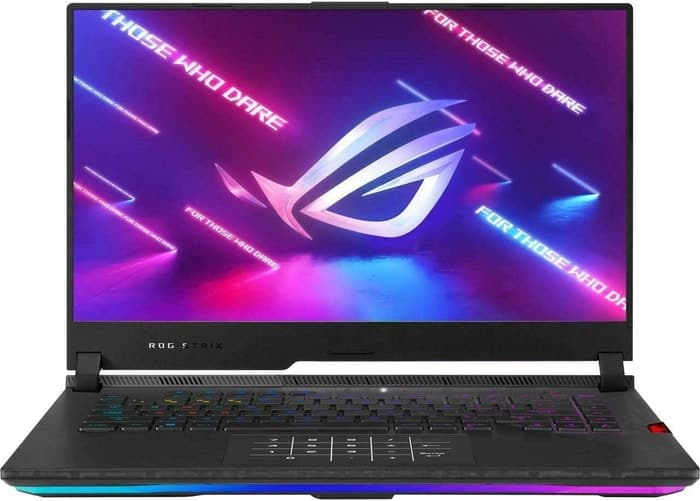
3.ASUS ROG Strix Scar
ASUS ROG Strix Scar 15 G533 offers powerful performance and a sturdy build, but falls short in terms of display angle, heat emissions, and battery life.- Sturdy construction
- Fast Wi-Fi 6E
- Excellent performance with Core i9-12900H and RTX 3070 Ti
- Wide color gamut coverage with Dolby Vision support
- Limited display angle
- No biometric login
- Heavy SSD throttling during continuous reads
Summary
The ASUS ROG Strix Scar 15 G533 impresses with its powerful Intel Alder Lake Core i9-12900H and Nvidia RTX 3070 Ti performance, as well as its sturdy construction and fast Wi-Fi 6E. However, it has limited display angle, high heat and noise emissions under load, and subpar battery backup.
Reviews
Alternatives
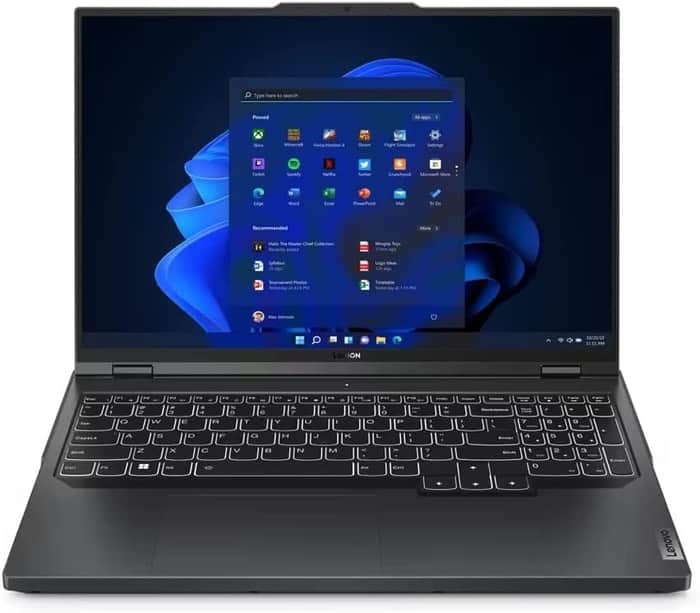
Lenovo Legion Pro 5
- Fantastic value
- Top-tier gaming performance
- Middling screen
- A bit heavy

4.Lenovo Legion Pro 7i 16
Lenovo Legion Pro 7i 16: A mid-priced powerhouse for video editing.- Strong overall performance
- Big, bright and fast display
- Per-key RGB lighting
- Some flex to keyboard deck
- Poor battery life
Summary
With a 13th-gen Core i9 CPU and RTX 4090 graphics, the Lenovo Legion Pro 7i Gen 8 is a strong performer at a reasonable price, making it a great choice for video editing. The large, bright and fast display, as well as the per-key RGB lighting, enhance the editing experience. However, there is some flex to the keyboard deck and the battery life is disappointing.
Alternatives

HP Omen 17
- QHD display with 165 Hz
- Expandable working memory
- Slightly below-average performance for an RTX 4080
- High noise level
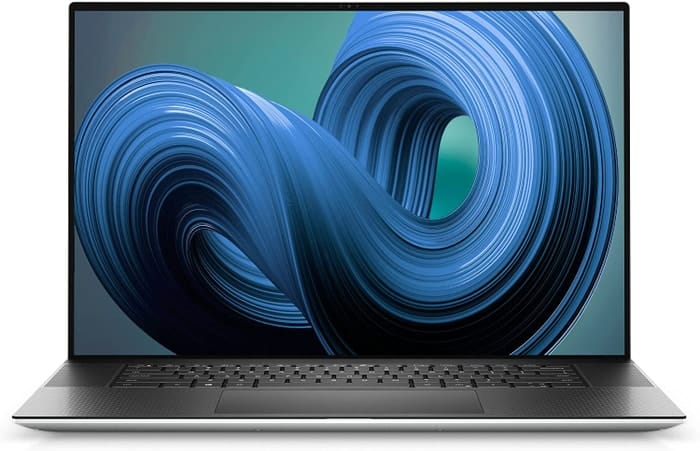
5.Dell XPS 17 9720
Dell XPS 17 9720 offers an excellent 4K display and high system performance, but falls short in graphics performance and cooling.- Excellent 4K display with AdobeRGB
- High-quality case
- Thunderbolt 4 PCIe 4.0
- Very high system performance
- Lower graphics performance than the predecessor
- Performance not completely stable under combined load
- Not Wi-Fi 6E compatible
- 720p webcam
Summary
The Dell XPS 17 9720 impresses with its excellent 4K display and high system performance, thanks to the new Intel Alder Lake processors. However, it suffers from lower graphics performance compared to its predecessor and weak overall cooling. Despite these shortcomings, it remains a solid choice for video editing.
Reviews
Alternatives
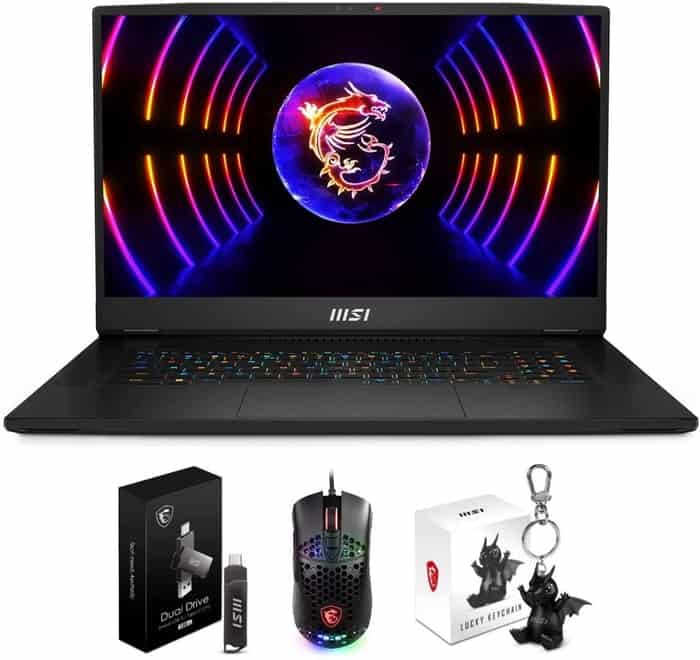
MSI Titan GT77HX 13VH-046US
- Excellent mechanical keyboard
- Class-leading Mini-LED display
- Uninspired design
- Short battery life
Table of the Best Laptops for Video Editing Under $1200
| Laptop | Price (approx) |
| HP Victus | $900 |
| ASUS TUF Dash F15 | $1,160 |
| ASUS ROG Strix Scar | $2,050 |
| Lenovo Legion Pro 7i 16 | $3,390 |
| Dell XPS 17 9720 | $5,600 |

